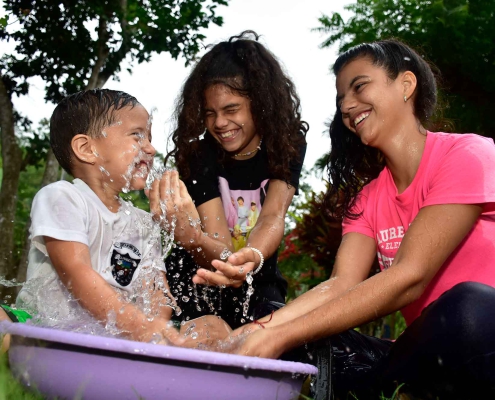Activities 2022

LAIF funds, managed by AECID, will strengthen actions through technical assistance for housing improvement and institutional strengthening, working with Portoaguas. As part of this work, a twinning agreement has been established with EMASESA, the Metropolitan Public Water Supply and Sanitation Company of Seville, to facilitate the exchange of knowledge and learning between the two companies. Among other activities, in 2022, training was provided in the use of technologies for detecting water leaks, in addition to various meetings in which Portoviejo managers traveled to Seville to learn about EMASESA’s way of working and, subsequently, EMASESA technicians traveled to Portoviejo.
In February 2022, it began the implementation of the Drinking water and sanitation program in rural communities of the Canton San Lorenzo response to the COVID-19 sanitation crisis (ECU-052-B). During these first months, work has already started on the planning and preparation of management documents.
Finally, in October 2022, the Council of Ministers authorized a new cooperation program in Ecuador for the Promotion of human rights to water and sanitation in rural communities (ECU-053-B), with a grant amount of 10.2 million euro (from the reimbursement of funds following the cancellation of a previous program), plus a 2.5 million euro counterpart. The objective is to guarantee the Human Rights to Water and Sanitation, focusing on a just ecological transition, to promote sustainable use and water exploitation models in Esmeraldas and Manabi’s rural areas.
.
COUNTRY CONTEXT

Ecuador ranks among the middle-income economies of Latin America; however, there is a significant gap in access to water and sanitation among the population, especially in rural areas.
The Ecuador-Spain Country Partnership Framework establishes four specific areas of work: sustainable economic development, innovation and research, gender and social inclusion, and habitat.
The latter includes improving access to water and sanitation services since only 70% of the population has an improved water source in or near their homes, which drops to 51% in rural areas alone.

